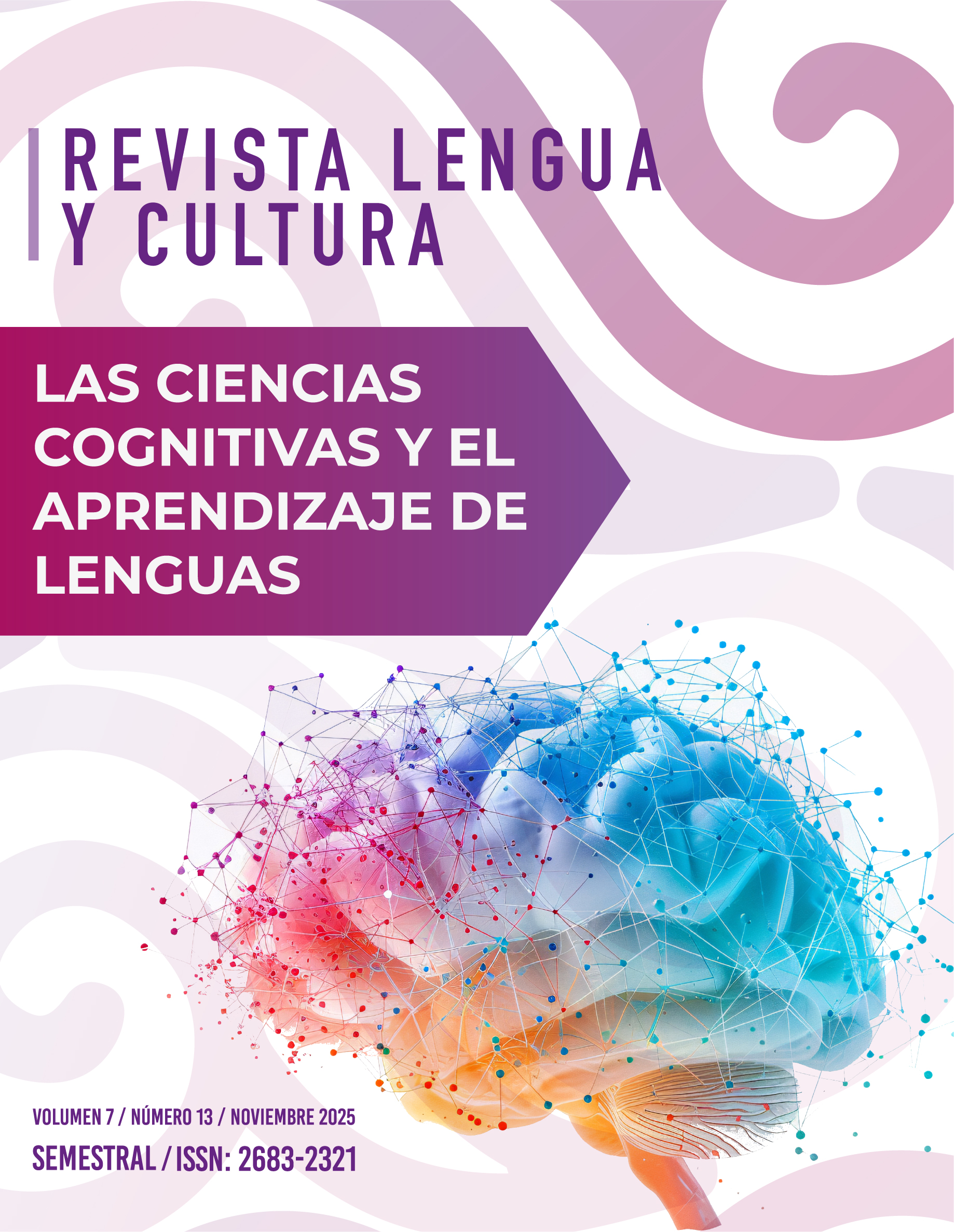La Gamificación como estrategia de aprendizaje en el aula de inglés como lengua extranjera
DOI:
https://doi.org/10.29057/lc.v7i13.14774Palabras clave:
Gamificación, gamificación en la educación, elementos del juego, ICT, tecnología en el aulaResumen
La gamificación se ha incorporado recientemente a la educación para el aprendizaje del inglés. Esto hace que el proceso de aprendizaje sea más interactivo, divertido, interesante, competitivo y orientado a objetivos mediante la integración de elementos de juego. Este estudio explora el uso de la gamificación como estrategia de aprendizaje en el aula de inglés como lengua extranjera. El objetivo de esta investigación es identificar los efectos y la eficacia de la gamificación para el aprendizaje del inglés. Teniendo en cuenta el objetivo de este proyecto de investigación para interpretar las experiencias de las personas, se llevó a cabo una investigación cualitativa. Por lo tanto, esta investigación es un estudio de caso. Los datos se recolectaron a través de un cuestionario y grupos de muestra en una institución privada en Puebla, México, que ayudó a entender lo que los profesores piensan en la integración de la gamificación. El estudio reveló los efectos y la eficacia de la gamificación en el aprendizaje del idioma inglés de los estudiantes como una estrategia en el aula del inglés como lengua extranjera. Los resultados de esta investigación pueden ser útiles para los profesores de inglés como lengua extranjera y proporcionar nueva información que se puede aplicar en el aula, la planeación de clases, y la tecnología en la educación.
Descargas
Información de Publicación
Perfiles de revisores N/D
Declaraciones del autor
- Sociedad académica
- N/D
- Editora:
- Universidad Autónoma del Estado de Hidalgo
Citas
Alomari, I., Al-Samarraie, H., & Yousef, R. (2019). The Role of Gamification Techniques in Promoting Student Learning: A review and Synthesis. Journal of information Technology Education: Research, 18, 395-417. https://doi.org/10.28945/4417
Azzouz, N. (2021). Gamification in learning English as a second language: A methodological framework to improve psychobehavioural factors and speaking fluency (Publication No. TD-087-105959/202106) [Doctoral Dissertation, Universitat d'Andorra]. http://hdl.handle.net/10803/673424
Baba, P. A. (2014). Technology in the Classroom: a Tool or a Drag. Journal of Education and Practice, 5(27), 75-78. www.iiste.org
Barghani, Z. S. (2020). The Benefits of Gamification in Learning. International Journal of Advance Research and Innovative Ideas in Education, 6(2), 1671-1675. http://ijariie.com/AdminUploadPdf/The_Benefits_of_Gamification_in_Learning_ijariie11788.pdf
Blankman, R. (2022, June 22). How to Use Gamification in the Classroom. Houghton Mifflin Harcourt. https://www.hmhco.com/blog/how-to-use-gamification-in-the-classroom
Camacho, S. R., Rillo, A. A., & Lavega, B. P. (2022). Gamified Digital Game-Based Learning as a Pedagogical Strategy: Student Academic Performance and Motivation. Applied Sciences, 12(21), 1-16. https://doi.org/10.3390/app122111214
Carstens, K., Mallon, J., Bataineh, M., & Bataineh, A. (2021). Effects of Technology on Student Learning. The Turkish Online Journal of Educational Technology, 20(1), 105-113. https://files.eric.ed.gov/fulltext/EJ1290791.pdf
Chehimi, G. & Alameddine, M. (2022). The making of a 21st century English language teacher during the pandemic. International Journal on Social and Education Sciences, 4(1), 101-120. https://doi.org/10.46328/ijonses.297
Coombs, H. (2022). Case study research: single or multiple [White paper]. Southern Utah University. https://doi.org/10.5281/zenodo.7604301
Costley, K. C. (2014, October 30). The Positive Effects of Technology on Teaching and Student Learning (Publication No. ED554557). Institute of Education Science. https://files.eric.ed.gov/fulltext/ED554557.pdf
Figueroa, J. F. (2015). Using Gamification to Enhance Second Language Learning. Digital Education Review, 27(21), 32-54. http://greav.ub.edu/der
García, A. (2020). Gamifying the EFL Classroom: Understanding the Power of the Gamification of Education (Publication No. 20201208120133-7012-T) [Master’s thesis, Benemérita Universidad Autónoma de Puebla]. https://hdl.handle.net/20.500.12371/10192
Ghavifekr, S. & Rosdy, W. (2015). Teaching and learning with technology: Effectiveness of ICT integration in schools. International Journal of Research in Education and Science, 1(2), 175-191. www.ijres.net
Gil-Acirón, L. A. (2022). Benefits of Gamification in Second Language Learning. Epos Revista de filología, 38 (2022), 103-126. https://doi.org/10.5944/epos.38.2022.33785
Gressick, J., & Langston, J. (2017). The guided classroom: using gamification to engage and motivate undergraduates. Journal of the Scholarship of Teaching and Learning, 17(3), 109-123. https://doi.org/10.14434/josotl.v17i3.22119
Handayani, N. (2017). Becoming the Effective English Teachers in the 21st Century: What should know and what should do?. English Language and Literature International Conference, 1(1), 156–164. https://core.ac.uk/download/pdf/270176705.pdf
Kiryakova, G., Angelova, N., & Yordanova, L. (2014). Gamification in Education [Paper Presentation]. 9th International Balkan Education and Science, Edirne, Turkey. https://www.researchgate.net/publication/320234774_GAMIFICATION_IN_EDUCATION
Kumar, H. (2018). Qualitative research methodology in social sciences and related subjects. Journal of Economic Development, Environment and People, 7(1), 23-48. https://doi.org/10.26458/jedep.v7i1.571
Laffey, D. (2022). Gamification and EFL Writing: Effects on Student Motivation. English Language & Literature Teaching, 28(1), 25–44. https://doi.org/10.35828/etak.2022.28.1.25
Lui, S. (2012). Using Gamification in Vocabulary Learning: A Case Study in Macau [Paper Presentation]. LAM University of Macau, Macau. https://www.nus.edu.sg/celc/wp-content/uploads/2022/09/13.-Sze-Lui.pdf
Mee, R. W., Shahdan, T. S., Ismail, M. R., Ghani, K. A., Pek, L. S., Von, W. Y., Woo, A., & Rao, Y. S. (2020). Role of gamification in classroom teaching: Pre-service teachers’ view. International Journal of Evaluation and Research in Education, 9(3), 684-690. https://doi.org/10.11591/ijere.v9i3.20622
Rahmani, E. F. (2020). The Benefits of Gamification in the English Learning Context. Indonesian Journal of English Education, 7(1), 32-47. https://doi.org/10.15408/ijee.v7i1.17054
Ratinho, E. & Martins, C. (2023). The role of gamified learning strategies in student’s motivation in high school and higher education: A systematic review. Heliyon, 9(8), 1-16. https://doi.org/10.1016/j.heliyon.2023.e19033
Roy, A. (2019). Technology in Teaching and Learning. Journal of Emerging Technologies and Innovative Research, 6(4), 356-362. http://doi.one/10.1729/Journal.20542
Thiagarajah, K., Ng, M. M., Jeyaraja, S. S. B., Gunasehgaran, V., & Maniam, M. (2022). Effectiveness of Gamification Tool in Teaching Vocabulary. International Journal of Academic Research in Business and Social Sciences, 12(9), 1046 – 1063.https://doi.org/10.6007/IJARBSS/v12-i9/14604
Zohrabi, M. (2013). Mixed Method Research: Instruments, Validity, Reliability and Reporting Findings. Theory and Practice in Language Studies, 3(2), 254-262. https://doi.org/10.4304/tpls.3.2.254-262
Descargas
Publicado
Cómo citar
Número
Sección
Licencia
Derechos de autor 2025 Cristobal Sánchez Montiel

Esta obra está bajo una licencia internacional Creative Commons Atribución-NoComercial-SinDerivadas 4.0.




















